What's Up? - Ohio Skylights November 2024
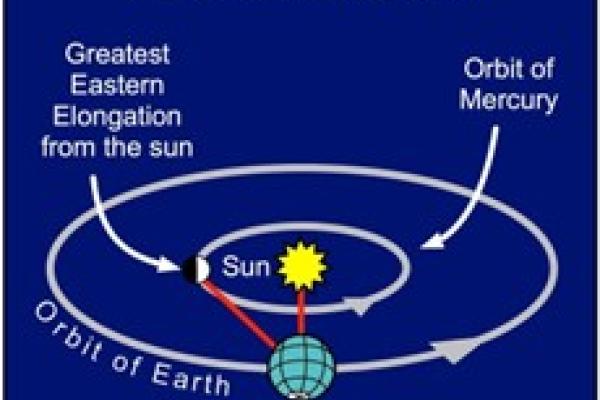
Constellations, Planets, and Astronomical Events Visible in November 2024
Happy November and happy end of daylight savings! November 3rd is the end of daylight savings time, meaning clocks will “fall back” an hour. This means everyone will get an extra hour of sleep and sunrise/sunset will shift an hour earlier. After November 3rd the sunrise will be around 7:00am and the sunset will be around 5:30pm. As days continue to get shorter, sunrise will be around 7:30am and sunset will be around 5:00pm by the end of the month.
November starts with a New Moon on the 1st of the month. The string of three Supermoons also ends this month on November 15th when we see the last Full Supermoon of the year.
Mercury will reach its greatest eastern elongation on November 16th, making it the best time to view the closest planet to the Sun! Since this is Mercury’s greatest eastern elongation, the best time to view it will be in the western sky just above the horizon as the Sun sets. The term “greatest eastern elongation” refers to how Mercury will be the furthest east of the Sun in the sky, even though it’s best viewed in the western horizon. In the diagram below you can see the orientation of the Earth, Mercury, and the Sun during this astronomical event.
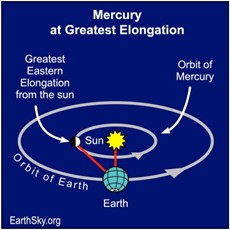
While you’re out trying to find Mercury, you’ll be able to see Venus too! It will be visible if you look to the southwest sky as the sun sets. Venus will be higher in the sky and much brighter than Mercury so it should be easy to spot. Mars will rise later in the night around 10:00pm with Jupiter rising earlier after 7:00pm. Saturn will be best viewed between 7:00pm and 8:00pm since it will be around its highest point in the sky.
There are two more meteor showers this month! The Taurids and the Leonids meteor showers will reach their peaks on November 4th and 17th respectively. The Taurids meteor shower is unusual compared to other showers because it actually features dust grains from two different systems: Asteroid 2004 TG10 and Comet 2P Encke. The Taurids is a minor shower with only 5-10 meteors per hour and the Leonids is an average one with about 15 meteor per hour. Unfortunately, the Leonids will be mostly blocked out by the full moon, but you may still see some of the brighter meteors. Below are diagrams showing where the meteor showers will radiate from.
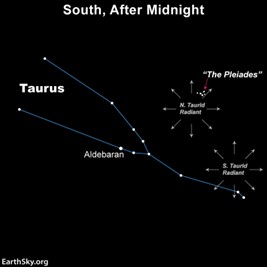
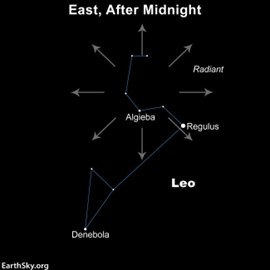
Time for a constellation highlight! As we move closer to the winter some new constellations will start appearing in the sky. One such constellation is Canis Minor, Latin for lesser dog. This constellation only has two bright stars in it, Procyon and Gomeisa, making it appear as a line in the sky. The name of the constellation's brightest star, Procyon, comes from a Greek word meaning "before the dog," as Procyon rises in the sky before the "Dog Star," Sirius. Procyon is also a binary star system, meaning that there are two stars orbiting a common center of mass. The brighter star, Procyon A, is similar to the Sun, but a little more massive at about 1.5 solar masses. The fainter star, Procyon B, is a white dwarf. Throughout November, Canis Minor will be visible in the eastern sky around midnight.
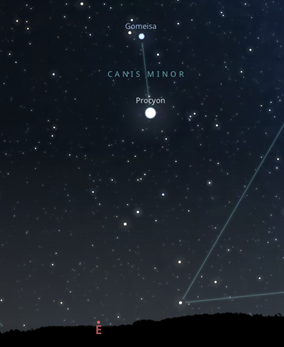
Sources:
Image Credit:
- Mercury Greatest Elongation: https://earthsky.org/tonight/mercury-after-sunset-greatest-elongation-east/
- Canis Minor constellation: https://stellarium-web.org/
